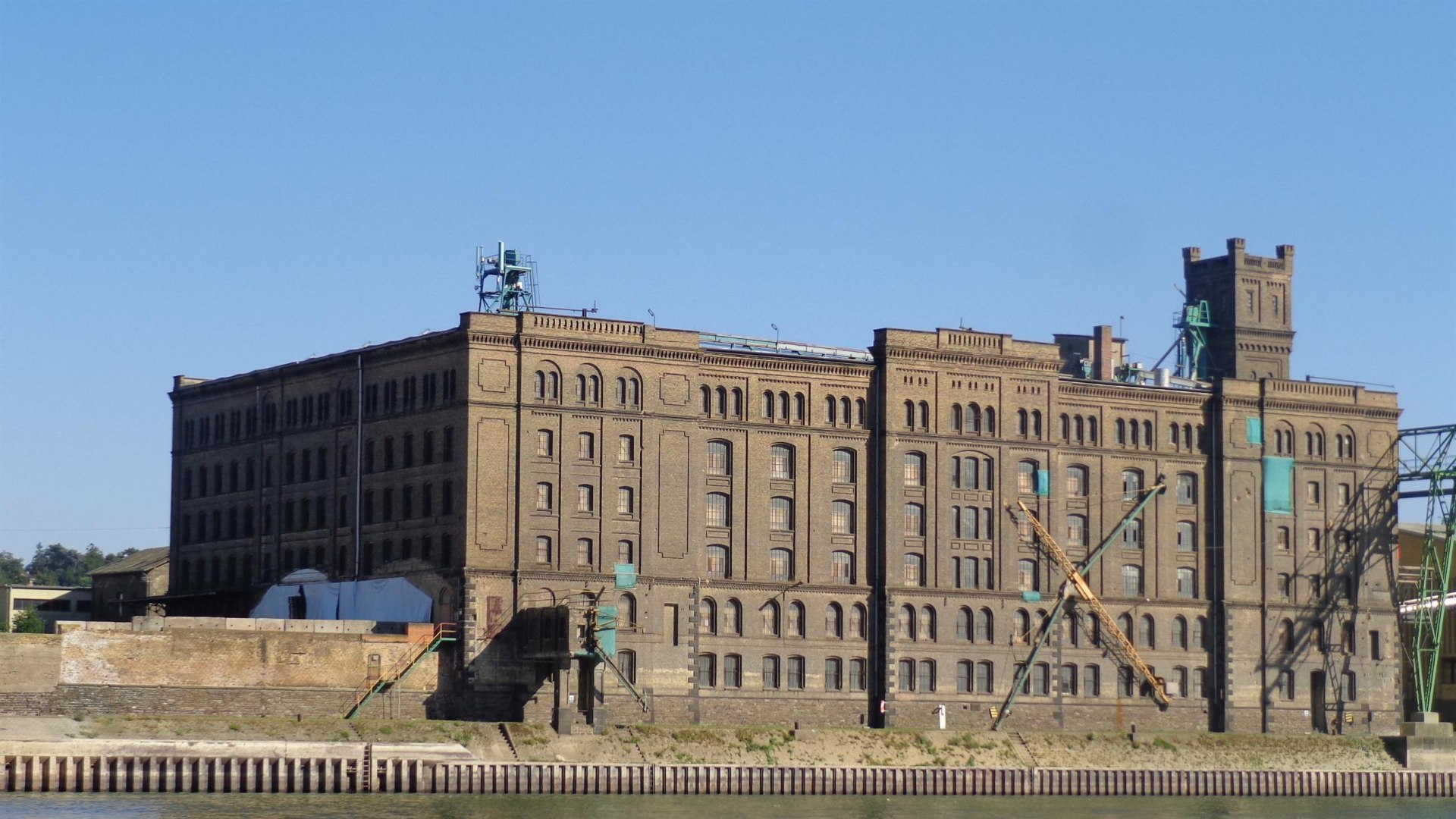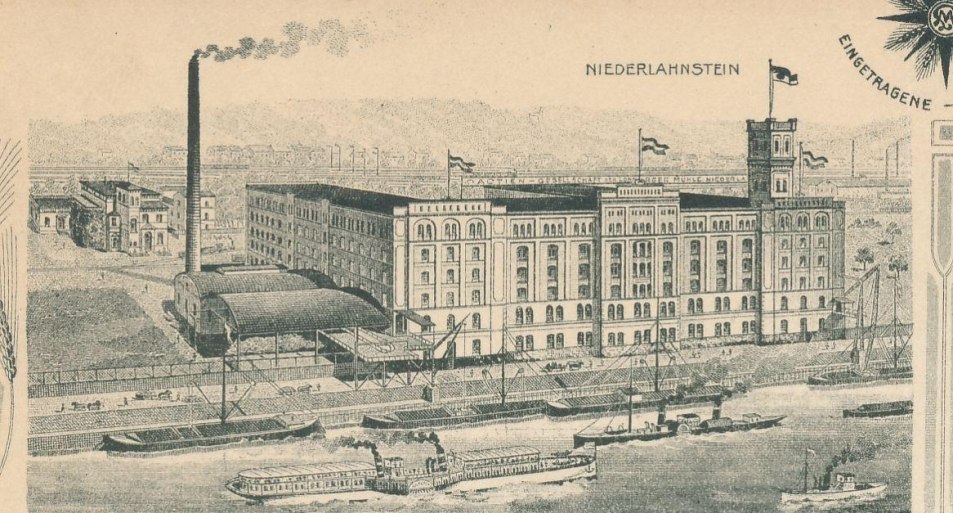00:00 - 23:59
Löhnberger Mühle
Didierstr. 27, 56112 Lahnstein
The Löhnberger Mill
Directly on the bank of the Niederlahnstein stands an impressive industrial building – the Löhnberger Mühle. The special thing: The large mill in the late-Classical style resembles, purely visually, more a representative castle complex than a production and storage facility. Due to its architectural uniqueness, it is a listed building and part of the UNESCO World Heritage Site Upper Middle Rhine Valley.
In the early 1890s, the Löhnberger Actien-Gesellschaft commissioned the mill builder Carl Ehrenberg to construct a branch on the Rhine to process primarily southern Russian grain. Ehrenberg, thanks to his Berlin origins, was entirely in the tradition of the school of Karl Friedrich Schinkel, whose architecture reminiscent of antiquity still shapes the cityscape of Berlin and Potsdam today.
Thus, the Löhnberger Mühle is also a prime example of this architecturally new style direction at the time. The six-story main building stretches along the Rhine. Together with the adjoining wings, it creates a U-shaped structure, whose symmetry was only broken in the first years by a square, crenellated tower and a flatter northern annex. Associations with castle complexes were intentional. The brick building is adorned with typical elements of classicism, such as stone belt courses and balusters (railings made of small columns).
After a two-year construction phase, the steam mill equipped with the latest technical knowledge commenced operations. Besides the actual mill, the facility housed a boiler house as well as grain and flour storage facilities. After an initial structural expansion in 1911, the facility was able to process up to 120 tons of grain per day, which was directly unloaded from the Rhine ships onto the premises. In 1929, Kurt Kampffmeyer acquired the mill and founded the Rheinisch-Nassauische Lagerei- und Speditions-Aktiengesellschaft Niederlahnstein. The milling operation was ceased, and the facility was used as a storage site and transshipment point for various agricultural products. The expansion to include fertilizers and fuels made a comprehensive expansion of the facility necessary, during which the storage capacity was multiplied. Since 2010, the former Löhnberger Mühle has been part of Beiselen Lagerei- und Umschlags GmbH, which also transships a wide range of agricultural products and bulk goods there.
The Löhnberger Mühle is a listed building
The appearance of the main building has remained unchanged despite all the modernization of the last 125 years. Plans to further adapt the site to the needs of modern industry foresee, due to the heritage protection, at least the preservation of the main facade facing the Rhine. Thus, visitors to the Middle Rhine Valley can continue to admire classicist industrial architecture in Lahnstein in the future.
Mehr
anzeigen
Weniger anzeigen
In the early 1890s, the Löhnberger Actien-Gesellschaft commissioned the mill builder Carl Ehrenberg to construct a branch on the Rhine to process primarily southern Russian grain. Ehrenberg, thanks to his Berlin origins, was entirely in the tradition of the school of Karl Friedrich Schinkel, whose architecture reminiscent of antiquity still shapes the cityscape of Berlin and Potsdam today.
Thus, the Löhnberger Mühle is also a prime example of this architecturally new style direction at the time. The six-story main building stretches along the Rhine. Together with the adjoining wings, it creates a U-shaped structure, whose symmetry was only broken in the first years by a square, crenellated tower and a flatter northern annex. Associations with castle complexes were intentional. The brick building is adorned with typical elements of classicism, such as stone belt courses and balusters (railings made of small columns).
After a two-year construction phase, the steam mill equipped with the latest technical knowledge commenced operations. Besides the actual mill, the facility housed a boiler house as well as grain and flour storage facilities. After an initial structural expansion in 1911, the facility was able to process up to 120 tons of grain per day, which was directly unloaded from the Rhine ships onto the premises. In 1929, Kurt Kampffmeyer acquired the mill and founded the Rheinisch-Nassauische Lagerei- und Speditions-Aktiengesellschaft Niederlahnstein. The milling operation was ceased, and the facility was used as a storage site and transshipment point for various agricultural products. The expansion to include fertilizers and fuels made a comprehensive expansion of the facility necessary, during which the storage capacity was multiplied. Since 2010, the former Löhnberger Mühle has been part of Beiselen Lagerei- und Umschlags GmbH, which also transships a wide range of agricultural products and bulk goods there.
The Löhnberger Mühle is a listed building
The appearance of the main building has remained unchanged despite all the modernization of the last 125 years. Plans to further adapt the site to the needs of modern industry foresee, due to the heritage protection, at least the preservation of the main facade facing the Rhine. Thus, visitors to the Middle Rhine Valley can continue to admire classicist industrial architecture in Lahnstein in the future.



